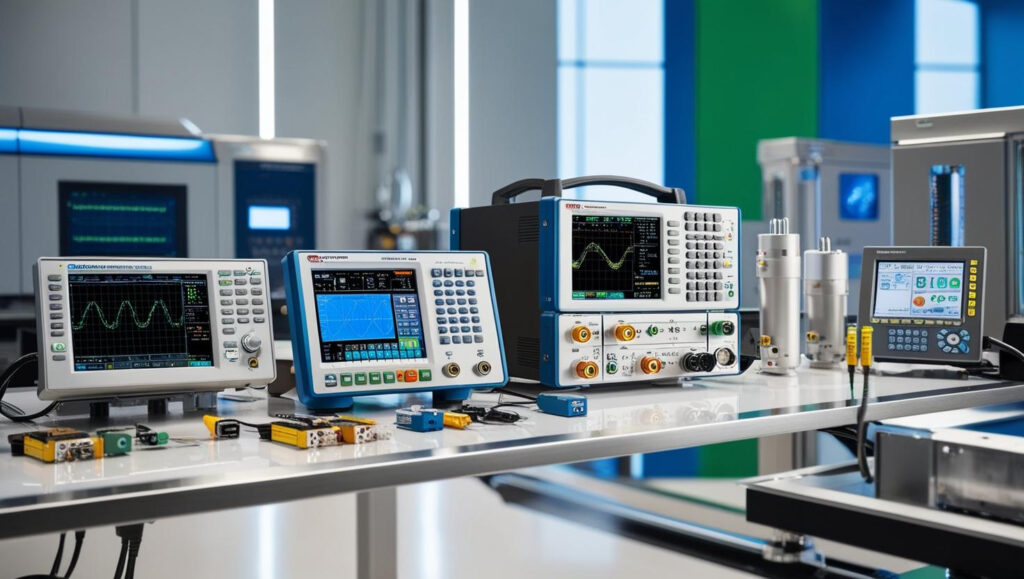The Test and Measurement (T&M) Equipment Market, integral to electronics, telecommunications, aerospace, automotive, and manufacturing sectors, encountered an unexpected challenge during the U.S. administration under President Donald Trump. The introduction of a wide range of tariffs on imported goods, particularly those from China, created a ripple effect across industries—and the T&M market was no exception.
As test and measurement devices often rely on precision components sourced globally, especially from China, the market experienced significant disruption. Increased import costs, supply chain delays, and strategic uncertainty became new realities. Yet, out of this disruption came new opportunities, industry introspection, and eventual adaptations that continue to shape the market today.
Request US Tariff Impact on Test and Measurement Equipment Market @ https://www.marketsandmarkets.com/forms/ctaTariffImpact.asp?id=116452716

A Detailed Overview of the Trump Tariffs and Their Relevance to the Test and Measurement Equipment Industry
Many test and measurement products, including oscilloscopes, multimeters, signal analyzers, and RF test equipment, were placed under these tariffs, incurring additional duties ranging from 10% to 25%. These devices, commonly manufactured or assembled in Asia, saw sudden increases in landed costs for U.S.-based distributors and end users.
This not only raised product prices but also disrupted long-standing supply chain relationships. American companies dependent on Chinese suppliers were forced to either absorb the added costs, pass them to customers, or pivot to alternative sourcing.
Key Takeaways from the Trump Tariff Impact on Test and Measurement Equipment Market
- Rising Costs and Price Increases
T&M equipment became more expensive, impacting purchasing decisions for research labs, production lines, and manufacturing facilities. - Supply Chain Restructuring
Companies began exploring alternatives to China for component manufacturing and final assembly, including regions like Vietnam, Taiwan, Mexico, and India. - Increased Domestic Manufacturing Discussions
Some U.S.-based T&M manufacturers considered reshoring parts of their operations to reduce dependency and future-proof against geopolitical risks. - Reduced Margins for Smaller Vendors
SMEs in the T&M space struggled to maintain margins as cost absorption became unsustainable. - Investment in Innovation and Modularity
Modular, software-defined instruments gained traction, helping companies reduce reliance on imported hardware.
Analyzing the Trump Tariff Impact on Test and Measurement Equipment Market in Depth
While the tariffs were meant to be a tactical move in a broader economic strategy, their unintended consequences were deeply felt in the highly technical and precision-focused T&M sector.
- Component Availability: Some high-performance semiconductors and circuit boards, often produced in Chinese fabs, became harder to source.
- Time-to-Market Delays: Import delays affected testing schedules for products in development pipelines, especially in industries like 5G and automotive electronics.
- Market Realignment: Companies that were previously heavily reliant on Chinese manufacturing had to rethink entire procurement strategies.
- Customer Friction: Price hikes and delayed deliveries strained relationships between T&M manufacturers and their clients.
However, these challenges also served as a wake-up call. The industry recognized the risks of hyper-globalized supply chains and began actively investing in supply chain resilience and digital transformation.
Proposing Solutions to Mitigate the Trump Tariff Impact on Test and Measurement Equipment Market
- Diversify Supply Chains
Companies should reduce overreliance on any single region by building robust supply chain networks across multiple countries. Vietnam, Mexico, and Eastern Europe offer viable alternatives for T&M manufacturing. - Invest in R&D and Local Assembly
Focusing on local R&D and assembly operations can help mitigate tariff impacts and drive faster product customization. - Adopt Software-Defined and Modular Instruments
Digital test platforms reduce reliance on physical hardware components that are subject to tariffs or disruptions. - Negotiate Strategic Trade Agreements
Industry associations can play a role in influencing trade policy that supports fair competition without harming innovation or supply continuity. - Build Strategic Inventory
Stockpiling critical components before tariff implementations or disruptions can help buffer against future price shocks. - Customer Transparency and Education
Open communication with customers about cost drivers, delays, and strategic responses builds trust and long-term loyalty.
The Trump-era tariffs significantly impacted the test and measurement equipment industry, but they also pushed the sector to innovate, adapt, and diversify. What started as a geopolitical challenge evolved into a growth catalyst for smarter strategies, modern product development, and more resilient supply chains.
As the global economy continues to evolve, the lessons learned from this period will remain vital for the future of the T&M market. Those who invest in agility, innovation, and diversified operations will be best positioned to thrive in both tariffed and tariff-free environments.

